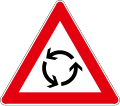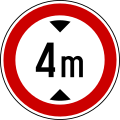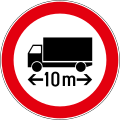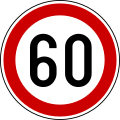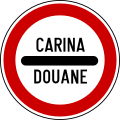Water protection area (FBiH)
Water protection area (RS)
School patrol (FBiH)
School patrol (RS)
The road of movement of the vehicle to the intersection where it is forbidden to turn left
Dead end (FBiH)
Dead end (RS)
Restrictions in available lanes
Use of lanes
Hospital (FBiH)
Hospital (RS,1)
Hospital (RS,2)
Police (FBiH)
Police (RS,1)
Police (RS,2)
First aid station
Use of lanes at an intersection (FBiH)
Use of lanes at an intersection (RS)
Use of lanes at an intersection for bicycles
Lane for buses and taxis (FBiH)
Lane for buses and taxis (RS)
End of lane for buses and taxis (FBiH)
End of lane for buses and taxis (RS)
Increased lane (FBiH)
Increased lane (RS)
Lane reduction (FBiH)
Lane reduction (RS)
Speed control
Traffic control
Overtaking prohibition ends (FBiH)
Overtaking prohibition ends (RS)
Overtaking prohibition for trucks ends (FBiH)
Overtaking prohibition for trucks ends (RS)
Ban on honking ends (FBiH)
Ban on honking ends (RS)
End of previous prohibitions
Minimum speed limit ends
Maximum speed limit ends (FBiH)
Maximum speed limit ends (RS)
End of mandatory winter tyres or chains for tyres
End of headlight obligation
Horse track ends
End of bike only
End of pedestrians only
Pedestrian and bicycle path ends
Pedestrian and bicycle path ends
End of living street
Speed limit zone
End of speed limit zone
No park zone
End of no park zone
Pedestrian zone
End of pedestrian zone
Recommended speed limit (FBiH)
Recommended speed limit (RS)
End of recommended speed limit (FBiH)
End of recommended speed limit (RS)
Parking zone
If put with road sign "parking zone" it means parking for wheelchair
Parking garage
Parking time limit (FBiH)
Parking time limit (RS)
Park and ride
Park and ride
Bridge
Wildlife crossing
Signpost
Built-up area (without Cyrlic script)
Built-up area (with Cyrlic script)
End of built-up area (without Cyrlic script)
End of built-up area (with Cyrlic script)
Altitude of the pass
Tunnel
Electric vehicle charging station (FBiH)
Electric vehicle charging station (RS)
Road information radio
Bus stop
Tram stop
Taxi stand
Airport
Port
Petrol station
Hotel
Public toilet
Fire extinguisher
Telephone
Information center
Cafe shop
Restaurant shop
Land for caravans
Land for RVs
Self water discharge
Camping area
Car wash
Tire dealer
Road assistance
Tool service Area
Drinking water
Vila
Park
Street sign
Manual traffic control (FBiH)
Manual traffic control (RS)
Chevrons
Chevrons
Chevrons
Chevrons
Pass either left or right








































